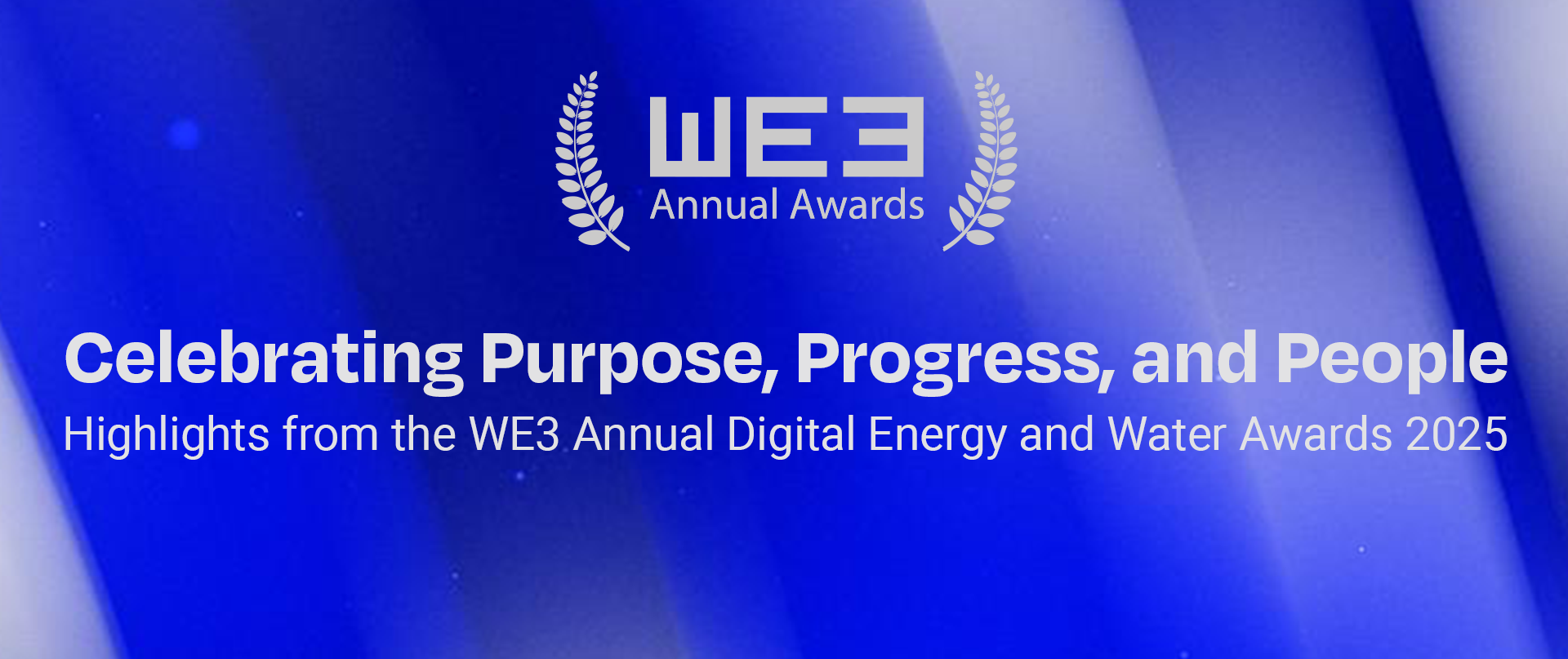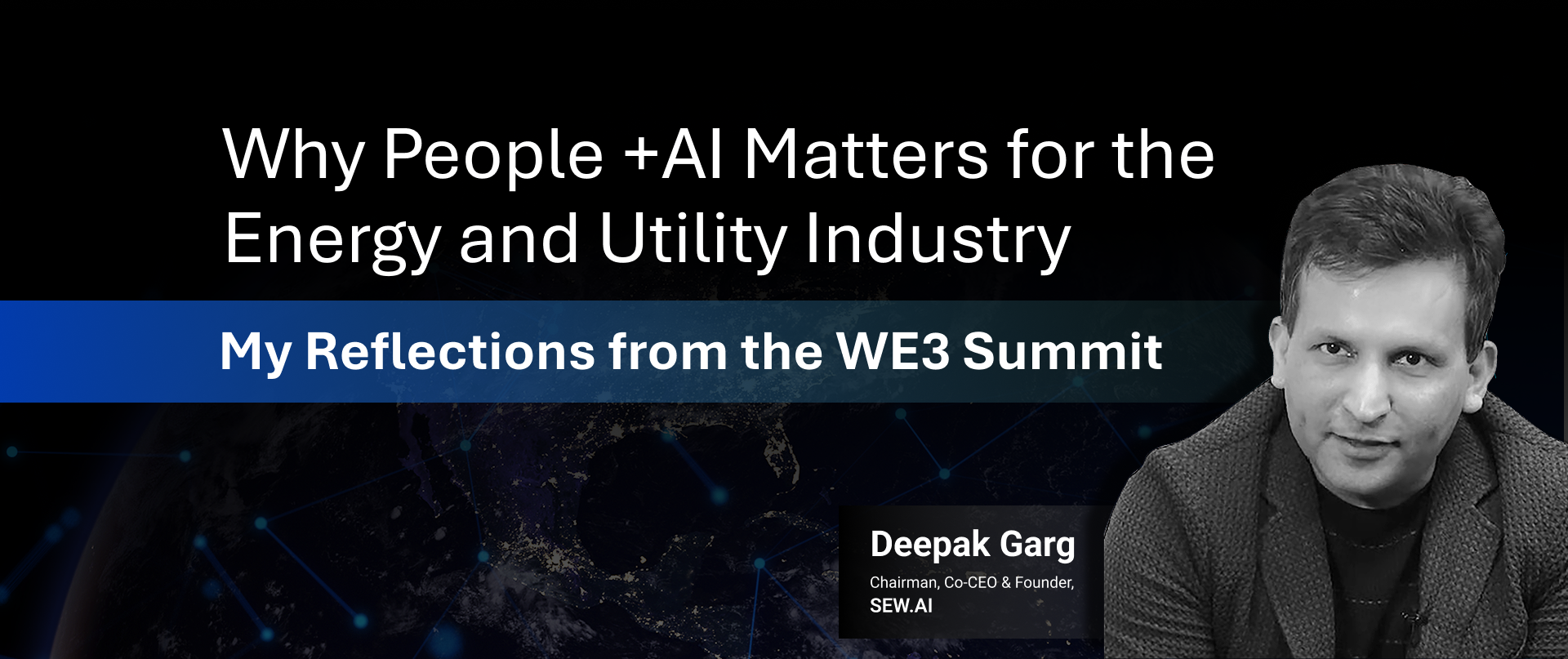- Introduction
- What Energy and Utilities Are Really Navigating
- The Next Customer Experience Revolution: From Reactive to Intentional
- From Customer-in-the-Grid to Utility-in-the-Life
- Why Generic AI Will Fail Utilities
- Why Agentic AI is the Strategic Shift Ahead
- The Real Shift: From Transactions to Systems of Trust
Master Blog
The Next Chapter in Energy and Utility Experience: How Vertical AI is Driving Purpose-Led Transformation Across Customers, Workforce, and Grid

Originally published on ASUG.com
We’ve spent the past decade talking about digital transformation, often focused on technology upgrades, cloud migrations, and mobile-first interfaces. But the next decade belongs to those who rethink customer experience—not as a digital upgrade, but as a foundational shift in how energy and utilities serve, engage, and adapt.
Let’s be honest: our industry didn’t evolve around the customer. It grew around infrastructure—networks of wires, pipes, meters, grids, regulations, compliance frameworks, and reliability metrics.
And for good reason. The primary mission was, and remains, to deliver safe, uninterrupted service at scale.
But the world energy and utilities operate in has changed—and so has the customer.
Today’s customer is no longer a passive ratepayer receiving a monthly paper bill. They’re a rooftop solar prosumer feeding energy back into the grid. A renter managing their account through an app. A property manager juggling dozens of meters across multiple units. A caregiver applying for assistance on behalf of a loved one. A small business owner demanding outage updates in real time. Their needs are nuanced. The use cases, complex. The expectations, far higher.
Legacy systems weren’t built for this new reality. They are reaching their limits—not just in scale, but in personalization, accessibility, and speed.
That’s why this moment calls for more than better interfaces. It demands embedding intelligence into the very fabric of customer experience.
What Energy and Utilities Are Really Navigating
Today, the conversation has shifted. Every utility leader I speak with is grappling with the same set of compounding realities:
- The grid is transforming. Distributed Energy Resources (DERs), electric vehicles (EVs), and climate volatility are reshaping the system faster than traditional models can respond.
- The customer is transforming. They’re digital-first, time-starved, and increasingly diverse—in language, lifestyle, and expectations.
- The workforce is transforming. Institutional knowledge is retiring out. The next generation expects intelligent tools, automation, and purpose-driven work—not outdated workflows.
- The mandate is transforming. It’s no longer just about reliability and cost. It’s about equity, sustainability, transparency, and accountability.
And within all of this, one constant cuts across every layer: the human experience.
How people feel. How fast they’re supported. How deeply they’re understood.
Customer experience (CX) is no longer a service function; it’s becoming the connective tissue of the utility. Experience is the new infrastructure.
The Next Customer Experience Revolution: From Reactive to Intentional
Customer Experience (CX) used to be seen as the soft stuff, something delegated to the contact center or managed by the mobile app team. But in today’s landscape, it’s emerging as a core lever of resilience, growth, and long-term relevance.
We’re witnessing a decisive shift in the utility CX maturity curve:
- From handling inbound calls to anticipating intent
- From siloed digital portals to orchestrated journeys
- From dashboards that measure satisfaction to systems that adapt to behaviour in real time
CX Platform is becoming the OS that powers everything from cost-to-serve to digital equity and regulatory trust.
And as the pressure mounts—from regulators, stakeholders, and society—utilities that move from reactive service to intentional experience will be the ones that lead.
From Customer-in-the-Grid to Utility-in-the-Life
For decades, the utility model asked customers to fit into the grid - into fixed billing cycles, narrow service windows, and one-size-fits-all communication.
But that model no longer holds. Because customers don’t live in grids. They live in moments. In needs. In complexity.
The real transformation ahead is this: shifting from a model where customers adapt to utility systems, to one where utility systems adapt to people’s lives.
- It means showing up before a problem, not after.
- It means speaking in the customer’s language—literally and contextually.
- It means delivering support that feels seamless, intelligent, and human - whether someone is managing an EV, navigating financial hardship, or simply paying a bill between work meetings.
This is where AI becomes essential—not to replace people, but to bring greater personalization, prediction, and empathy at scale.
Why Generic AI Will Fail Utilities
AI’s potential is undeniable, and rightfully so. It’s one of the most powerful shifts of our time. But for utilities, the risk isn’t in adopting AI too slowly. It’s in adopting the wrong kind.
Because AI without context doesn’t solve problems—it creates new ones. It leads to generic outcomes, shallow automation, and broken customer experiences.
Utilities don’t need a chatbot that answers FAQs. They need an AI engine that understands the difference between a billing cycle close and a landlord-tenant transition. That knows when a high-usage alert intersects with a demand response event. That can triage outage calls not just by volume, but by vulnerability. That can route EV charger requests based not just on ZIP code, but grid readiness, time-of-use pricing, and future load projections.
This is where Vertical AI becomes non-negotiable.
Not a feature. Not an add-on. But a core architectural layer—purpose-built for the complexity, nuance, and regulatory sensitivity of the utility sector.
Vertical AI doesn’t just process data. It learns from operational history, consumption behavior, grid dynamics, customer diversity, and policy nuance—across millions of real-world service interactions.
It becomes the connective tissue—linking systems, orchestrating journeys, and driving outcomes with intelligence.
Why Agentic AI is the Strategic Shift Ahead
Vertical AI gives the industry the foundation—to pivot, adapt, and prepare for what’s next.
The next shift is already here: Agentic Intelligence.
Where Vertical AI brings context, Agentic AI brings action, turning intelligence into real-time, people-centered outcomes.
Here’s what that looks like in practice:
- A frontline agent receiving intent-aware guidance before picking up the call.
- A field technician getting instant feedback—without switching apps or systems.
- A customer moving across channels—without ever repeating their issue.
Agentic AI is not about replacing people. It’s about strengthening them.
It’s invisible intelligence, built around the people.
And it’s what modern customer experience demands—not smarter tools, but systems that move with us.
This is the future. And Vertical AI is what makes it possible.
The Real Shift: From Transactions to Systems of Trust
With Agentic AI, we move from automation to empowered action. But the real outcome of this evolution isn’t just efficiency. It’s trust.
Utilities today are navigating the most complex transition in modern energy history, while maintaining affordability, equity, and grid stability.
And in this world, CX isn’t a surface metric. It’s a trust signal.
- When customers feel understood, they enrol in programs.
- When employees feel supported, they solve faster.
- When regulators see outcomes—real, measurable, inclusive outcomes—they enable acceleration.
Experience becomes the currency that powers transformation.
The utility of the future won’t win by adding more apps or more call centre agents.
It’ll win by integrating experience into its very fabric—through AI that understands, journeys that adapt, and people who are empowered, not overwhelmed.
Because in the end, this transformation isn’t about technology. It’s about showing up better—for every person, in every moment, across every channel. At scale.
I’ve always believed that purpose must lead any technological evolution.
That’s why at SEW.AI, we’ve built the #1 digital customer experience platform for energy and water utilities—rooted in one philosophy: Put people at the center, use technology to empower them, and design everything else around them.
Together with SAP, we’re proud to partner with utilities across the world to accelerate this transformation—modernizing digital journeys, personalizing service, improving equity and accessibility, and enabling the move to a more intelligent, sustainable, and responsive utility model.
This is our opportunity to lead the next era of trusted, intelligent utility. Because in this next chapter of energy and water, it won’t just be about what we power.
It’ll be about how we empower.






